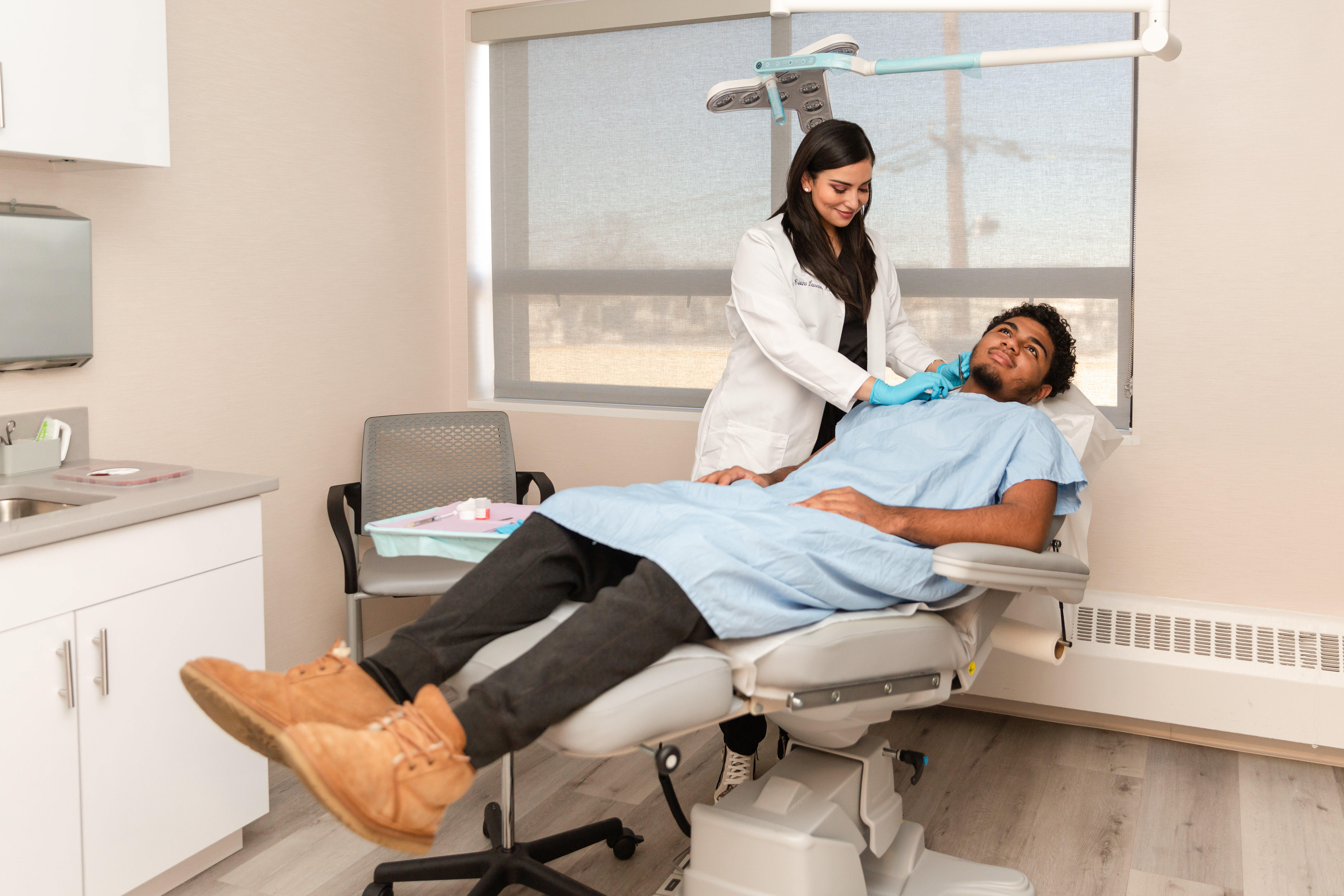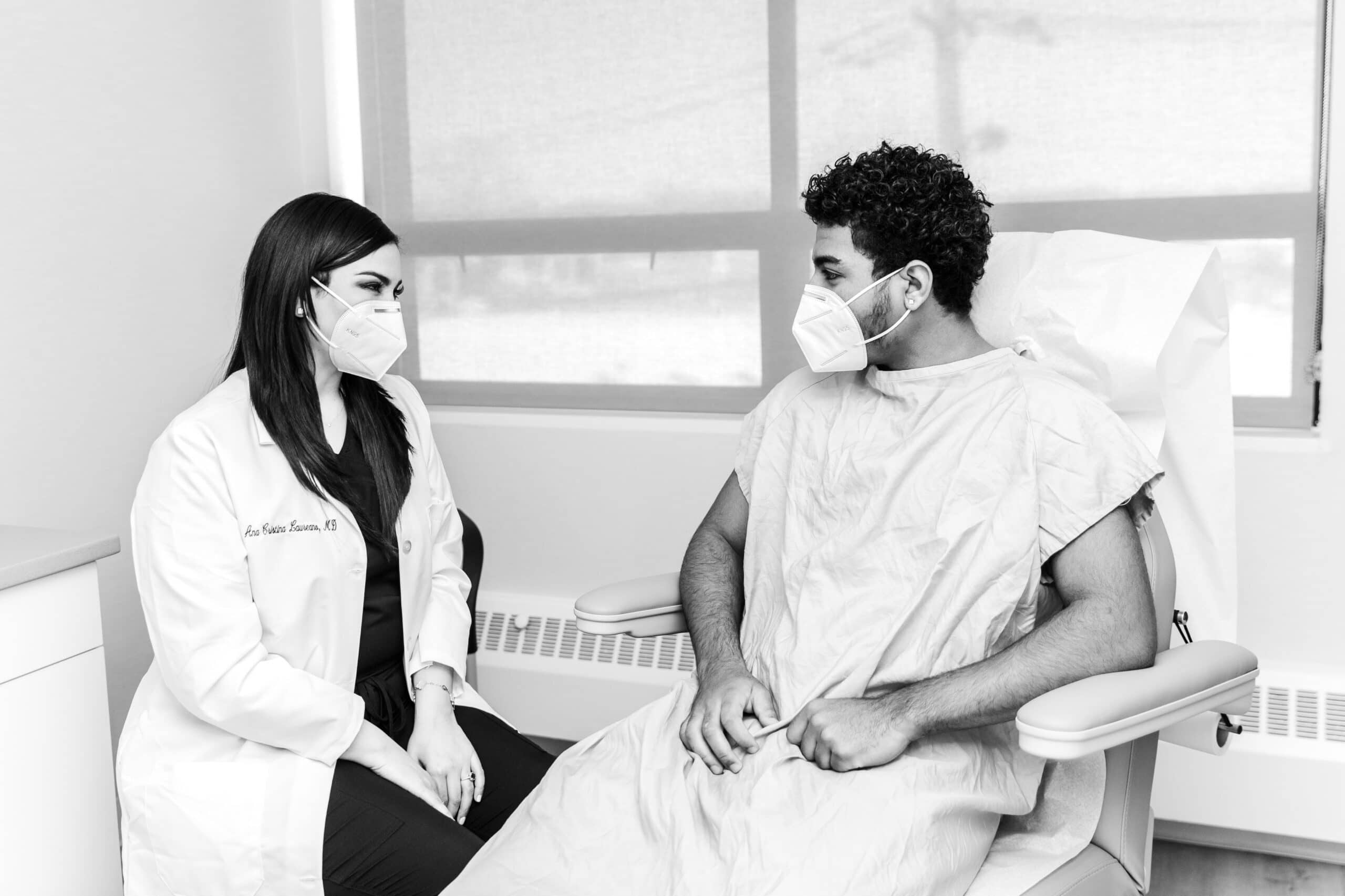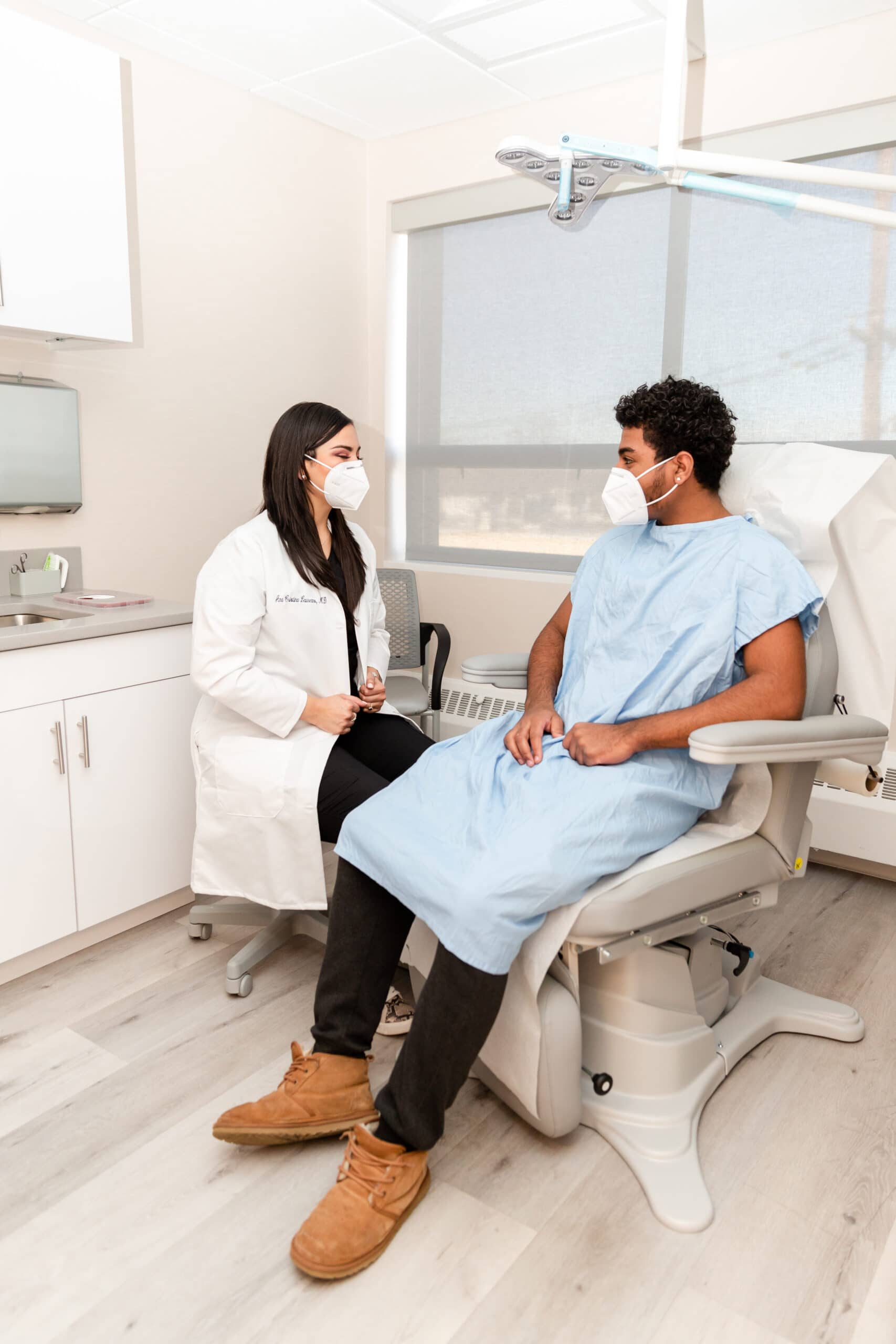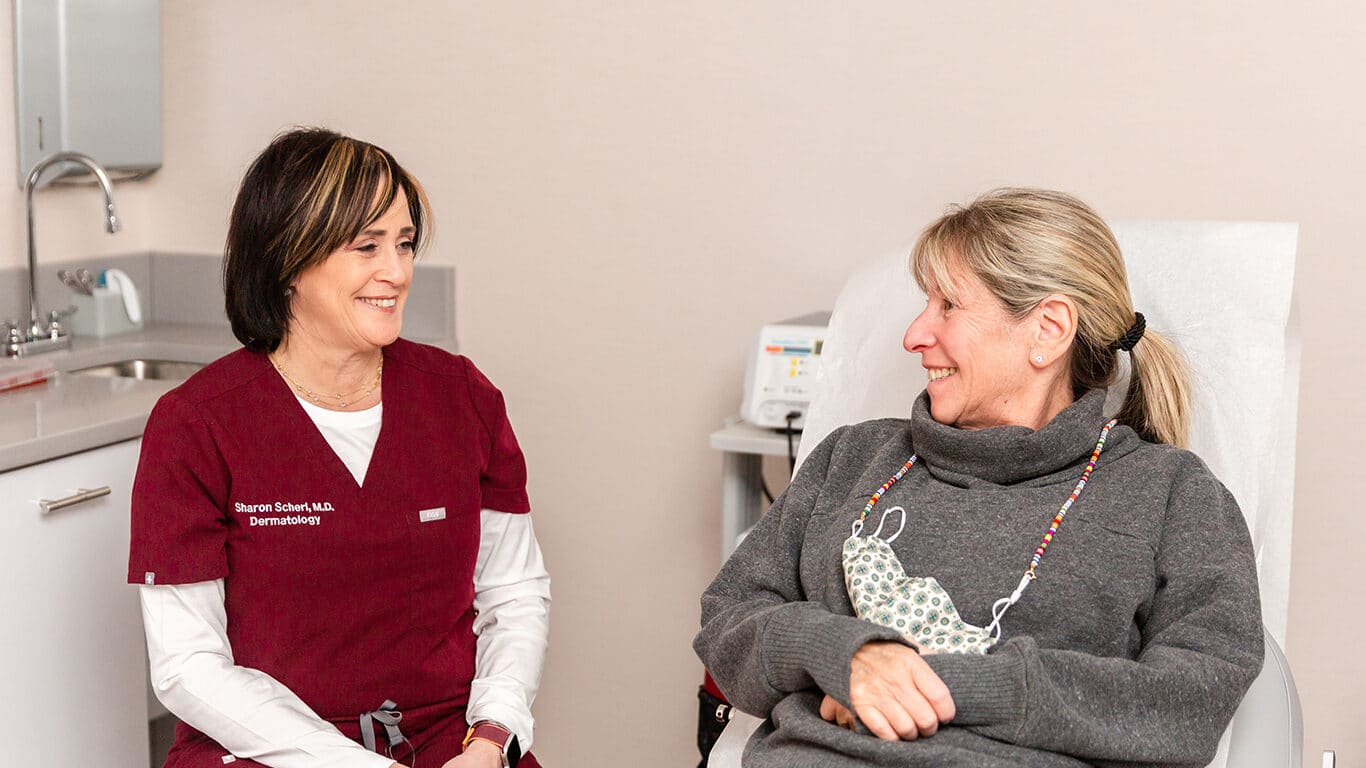
Fungal Infections Treatment in Englewood Cliffs, NJ
Fungi are single or multi-cellular organisms that cause skin infections.

Fungi can be true pathogens, which cause infections in healthy people, or opportunistic pathogens, which cause infections in immune-compromised patients.
A common type of fungus is yeast, which is already present in the human body, but when levels increase, can result in infection.
Dermatophytes are fungal organisms that grow on the human body and infect the top layer of skin as well as nails or hair. There are different types of fungal infections, and each can appear in different areas of the body. Some symptoms include: rash, itchy blisters, cracking of the skin, and skin irritation.
What Causes Fungal Infections?
Fungal infections can be caused by a variety of conditions and medication-use. Some risk factors for developing a fungal infection include the following:
- Antibiotics: Antibiotics decrease the amount of helpful bacteria living in the body. When these levels are decreased, fungi have an opportunity to invade and colonize.
- Corticosteroids: Cortisteroids are often used to reduce inflammation and treat other skin disorders. They sometimes lower immune responses, and thereby create favorable conditions for fungal growth.
- Medical Conditions: People suffering from diabetes and some forms of cancer are more prone to fungal infections.
- Compromised Immune System: When immune systems are weakened, such as when a patient undergoes chemotherapy, or for those inflicted with Acquired Immune Deficiency Syndrome (AIDS), fungi have better opportunities to grow, causing more infections.
- Environmental Factors: Fungi grow and reproduce in moist areas. Sweaty shoes and clothes can therefore help increase fungi production and lead to infection.
- Heredity: Some people are genetically predisposed toward fungal infections. They are more likely to contract a fungal infection when exposed to infectious conditions.
What Are the Different Types
of Fungal Infections?
- Tinea Pedis (“Athletes Foot”): Tinea pedis affects over 10% of the United State’s population each year, and 75% will contract it at some point in their lives. The fungus appears in between toes, characterized by skin becoming white, moist, and easily rubbed off. The tops may be red, dry and flaky. Tinea pedis generally occurs with hot, moist conditions, or if shoes are worn often and without socks.
- Tinea Cruris (“Jock Itch”): As with tinea pedis, moist, sweaty conditions around the groin, combined with poor circulation from tight clothing leads to fungal infection in this area. Intense itching and burning are the usual symptoms. Redness, flaking and peeling on the inner thighs and scrotum may also occur.
- Tinea Corpora (Ringworm): Tinea corpora is caused by a microscopic fungus, not a worm as the name implies. The infected area spreads out slowly from the central point, creating a slightly raised, red ring surrounding a less red, flaky, itchy area. This “ring” gives the infection it’s nickname. Tinea corpora can spread throughout the body, and may appear in multiple areas at once.
- Candidiasis: This infection is characterized by brown-red itchy discoloration on the skin, generally occurring where there are folds in the skin such as under the arms, in the rectal area, and beneath the breasts. This type of fungus also causes vaginal yeast infections.
- Nail Fungus: This fungus can make your nails appear thickened, brittle, crumbly, distorted, or darkened. It usually starts as a yellow tinge to the nail. Approximately 25 million Americans have some form of nail fungus. A fungus may be present on our skin or nails without causing any issues. A fungal nail infection occurs from the overgrowth of fungus in the nail.

Treatments for Fungal Infections
Treatment for fungal infections is generally antifungal creams, which can be bought over the counter, such as 1% clotrimzole and 1% terbinafine. They are usually applied to the affected areas several times daily, and can take many weeks before all signs of the fungus vanish. If these creams fail, prescription antifungal creams such as econazole 1% may be recommended. For extreme cases, or when toenails are involved, oral terbinafine may be useful.
Laser can be used to treat nail fungus. The light emitted by the laser heats and kills the live fungus. Once it is destroyed, the nail can grow out normally. If the laser is not an option for you, oral or topical medications may be considered.
There are some measures you can take to prevent the skin from contracting a fungal skin infection. You should always keep clothes dry and clean, and wear loose-fitting clothes as much as possible. Avoid sharing hairbrushes, combs, and towels, as they may contain skin fragments with fungal colonies. Use alternative shoes every few days to avoid athlete’s foot. Natural fabrics that allow the skin to “breathe,” such as cotton, should be worn as well.
LEARN MORE AT YOUR CONSULTATION IN ENGLEWOOD CLIFFS, NJ TODAY
Fungal infections can develop for many different reasons. For more information on fungal infections, contact our office today to schedule your consultation.
OTHER Skin Conditions
Acne
Acne is the most common skin condition in the United States. Although it’s common, accurate information about acne can be scarce.
Acne Cysts
An acne cyst forms when the pore fills with dead skin cells oil, and bacteria. A cyst goes deep into the skin and can hurt.
Actinic Keratosis
An actinic keratosis or AK is a rough, dry, scaly patch or growth that forms on the skin. An AK forms when the skin is badly damaged by ultraviolet (UV) rays from the sun or indoor tanning.
Alopecia (Hair Loss)
Millions of people experience hair loss. Some people see their hair re-grow without doing anything. Others need treatment for their hair to re-grow. Sometimes, hair will not re-grow.
Atopic Dermatitis/Eczema
This is a common skin disease in children. Children often get atopic dermatitis (AD) during their first year of life. If a child gets AD during this time, dry and scaly patches appear on the skin.
Atypical Mole (Dysplastic)
This type of mole can look like melanoma. It is not melanoma. But you have a higher risk of getting melanoma if you have certain risk factors.
Basal Cell Carcinoma
Basal cell carcinoma (BCC) is the most common form of skin cancer. More than two million cases of this skin cancer are diagnosed in the United States each year.
Bed Bugs
Bedbugs are tiny insects that feed on human blood. They hide in dark places close to where humans sleep and usually crawl out to feed while people are fast asleep.
Dry Skin
Dry skin is common. It can occur at any age and for many reasons. Using a moisturizer often helps repair dry skin.
Eczema
Eczema is a word that means irritated skin. Doctors don’t really know why some kids and adults get eczema, and others don’t. They think it might happen for a variety of reasons.
Thousands of People in the Metro Area Trust Scherl Dermatology
CONTACT US
Scherl Dermatology
Englewood Cliffs, NJ 07632
Same-Day Appointments Now Available


CONTACT US
Scherl Dermatology
140 Sylvan Ave. Suite 302,
Englewood Cliffs, NJ 07632
Same-Day Appointments Now Available
Scherl Dermatology
©2024 Schweiger Dermatology Group. All Rights Reserved. Privacy Policy | The information available on this website is provided for informational purposes only. This information is not intended to replace a medical consultation where a physician's judgment may advise you about specific disorders, conditions and or treatment options. We hope the information will be useful for you to become more educated about your healthcare decisions. If you are vision-impaired or have some other impairment covered by the Americans with Disabilities Act or a similar law, and you wish to discuss potential accommodations related to using this website, please contact us at 201.568.8400 .

